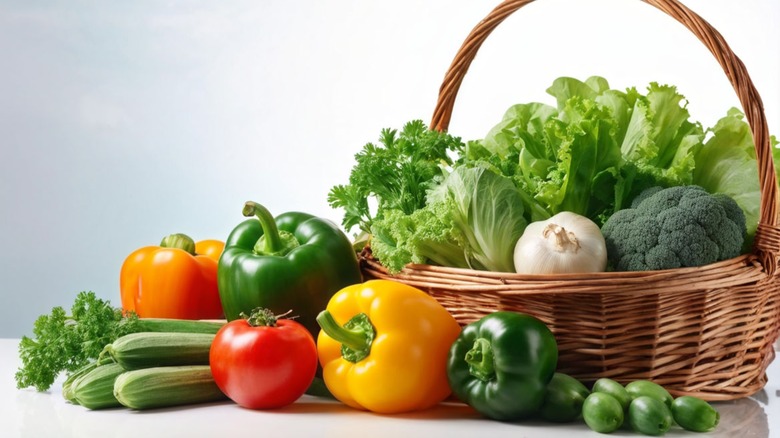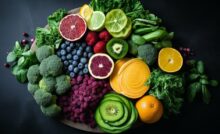RAW vs COOKED: THE BEST WAY TO ENJOY VEGETABLES LIKE CARROTS, SPINACH, ASPARAGUS, AND TOMATOES


Vegetables like carrots, spinach, asparagus, and tomatoes are often referred to as nutritional powerhouses.
Vegetables like carrots, spinach, asparagus, and tomatoes are often referred to as nutritional powerhouses. They are packed with essential vitamins, minerals, antioxidants, and fibre that promote good health. However, there’s a lot of debate around how to consume them — should they be eaten raw or cooked? Some people believe that cooking destroys nutrients, while others argue that it makes certain nutrients more bioavailable. The truth lies somewhere in between. Let’s explore the best ways to enjoy these vegetables while retaining their maximum health benefits.
Are Raw Vegetables Always Better?
It’s a common misconception that eating vegetables raw is always the healthiest option. While raw vegetables are loaded with fibre and nutrients, they may not always be the easiest for your body to digest. For example, raw vegetables can sometimes cause bloating, gas, or stomach discomfort, especially in individuals with sensitive digestive systems. Cooking vegetables may reduce some heat-sensitive nutrients, like vitamin C, but it also makes other nutrients easier for the body to absorb. So, a balance of raw and cooked vegetables is key to a healthy diet. Let’s dive deeper into specific vegetables and understand how preparation methods affect their nutritional value.
Carrots: Raw Crunch or Cooked Goodness?
Carrots are rich in beta-carotene, a precursor to vitamin A that is essential for eye health, immune support, and skin vitality. Eating raw carrots provides you with plenty of vitamin C and dietary fibre, making them an excellent snack or salad ingredient. However, cooking carrots, especially by steaming, can enhance the bioavailability of beta-carotene. This means that your body can absorb more of this nutrient when carrots are cooked. Light cooking also softens their texture, making them easier to digest for people with sensitive stomachs. For a balance, you can enjoy carrots raw in salads or lightly steamed with a drizzle of olive oil to aid vitamin A absorption.
Spinach: Nutrient-Rich but Tricky
Spinach is a nutritional superstar with high levels of iron, calcium, and vitamins A, C, and K. But raw spinach contains oxalates — compounds that bind to calcium and iron, reducing their absorption. These oxalates can also contribute to kidney stone formation in individuals prone to the condition. Cooking spinach significantly reduces its oxalate levels, making the calcium and iron more available for absorption. Light steaming or sautéing spinach is an excellent way to retain its nutrients while minimizing oxalate content. That said, raw spinach can still be enjoyed in small amounts, such as in salads or smoothies, especially when paired with vitamin C-rich foods like lemon juice to boost iron absorption.
Asparagus: Raw vs Cooked
Asparagus is loaded with folate, fibre, and antioxidants like glutathione, which supports liver detoxification and fights free radicals. When eaten raw, asparagus has a crunchy texture and retains its vitamin C content. However, cooking asparagus, especially steaming or grilling, enhances the availability of antioxidants. For instance, lightly cooked asparagus releases more glutathione, which helps in reducing inflammation and boosting liver health. If you prefer raw asparagus, slice it thin and toss it with lemon juice and olive oil in a salad. To enjoy its full antioxidant potential, consider lightly steaming or roasting it.
Tomatoes: A Case for Cooking
Tomatoes are rich in vitamin C, potassium, and lycopene — a powerful antioxidant linked to heart health and reduced cancer risk. While raw tomatoes retain more vitamin C, cooking them dramatically boosts the availability of lycopene. For this reason, tomato-based sauces, soups, and stews are excellent ways to enjoy this vegetable. Adding a healthy fat, like olive oil, further improves lycopene absorption. That said, raw tomatoes make a refreshing addition to salads and sandwiches, offering a good dose of vitamin C and hydration.
Tips for Balancing Raw and Cooked Vegetables
To get the most from your vegetables, it’s essential to balance raw and cooked options in your diet. Here are some tips to help you make the most of these nutritional powerhouses:
1. Experiment with Textures:
Blend raw vegetables like spinach or carrots into smoothies.
Grate raw carrots or thinly slice asparagus for salads.
Lightly steam, sauté, or roast vegetables to enjoy a softer texture and enhanced flavour.
2. Pair with Healthy Fats:
Fat-soluble vitamins like A, D, E, and K require healthy fats for better absorption. Add olive oil, avocado, or nuts to your vegetable dishes, whether raw or cooked. For example, drizzle olive oil on roasted asparagus or toss raw spinach with avocado slices in a salad.
3. Listen to Your Body:
If raw vegetables cause discomfort, gas, or bloating, opt for cooking methods like steaming or sautéing. These techniques preserve nutrients while improving digestibility. If digestive issues persist, consult a nutritionist for tailored advice.
4. Season Smartly:
Use herbs, spices, and natural acids like lemon juice or vinegar to enhance both the flavour and nutrient availability of your vegetable dishes.
5. Rotate and Experiment:
Avoid eating the same vegetables in the same way every day. Rotate between raw and cooked versions to enjoy a variety of nutrients and textures.
The Bottom Line
When it comes to vegetables like carrots, spinach, asparagus, and tomatoes, there’s no one-size-fits-all approach. Each vegetable has unique nutritional qualities that can be maximized by varying how you prepare and consume them. Enjoy carrots raw for a fibre-rich snack or steam them for better beta-carotene absorption. Eat small portions of raw spinach in salads, but cook it to unlock more calcium and iron. Relish the crunch of raw asparagus occasionally, but lightly cook it to enhance its antioxidant power. Appreciate the fresh taste of raw tomatoes, but don’t miss out on the health benefits of cooked ones.
Recent Posts
One Sleepless Night Can Weaken Your Immunity and Trigger Inflammation
Sleep is often regarded as a luxury in today’s fast-paced world, but scientific research continuously…
Thick Heart Syndrome: A Silent Threat to Millions in India
Heart disease remains one of the leading causes of death worldwide, and in India, cardiovascular…
Delhi Sees Surge in H1N1 and Influenza B Cases
Delhi is witnessing a sharp rise in flu cases, particularly Influenza B and H1N1 (commonly…
Woman Dies During MRI Scan Due to Medical Negligence
In early February 2025, a tragic incident occurred in Eluru, Andhra Pradesh, where a 61-year-old…
Holi and Eye Safety: Protect Your Vision During Festivities
Holi, the festival of colors, is one of the most vibrant and joyous celebrations in…
FDA Recalls Popular Skincare Products Over Cancer-Causing Chemical
In a major development, the U.S. Food and Drug Administration (FDA) has issued recalls for…


